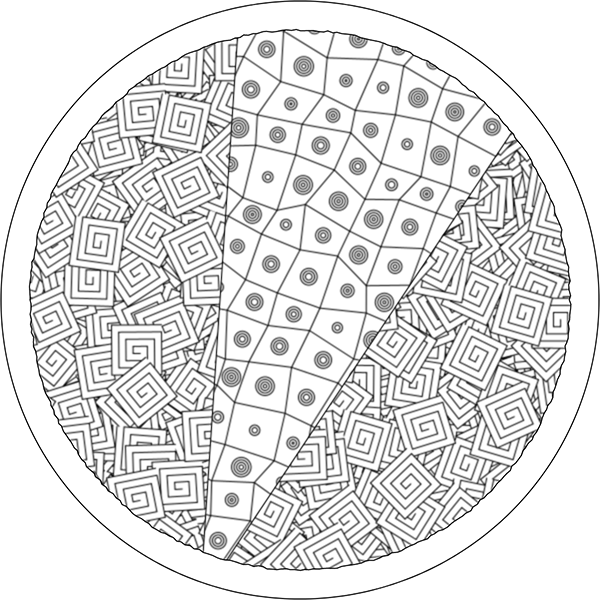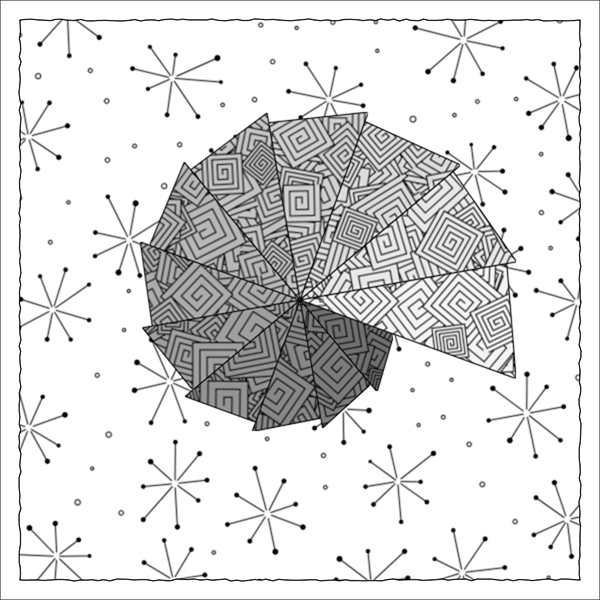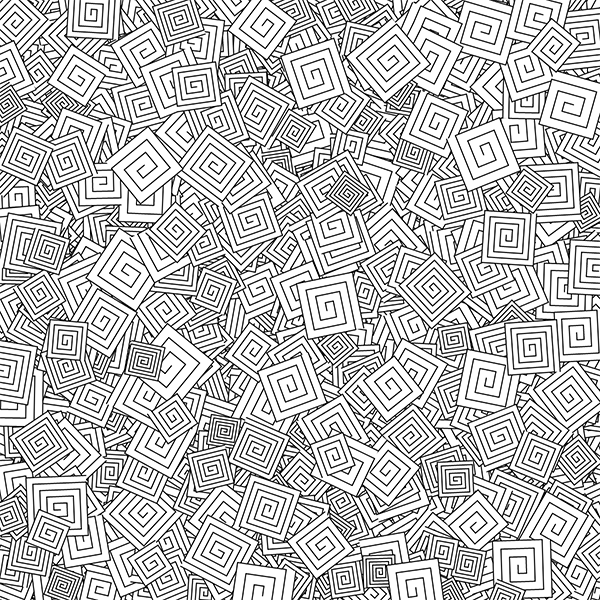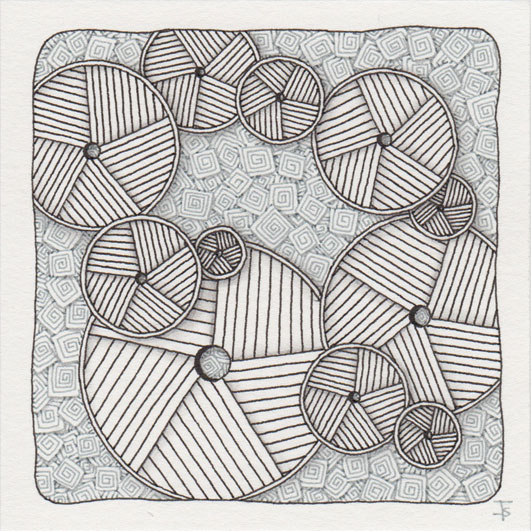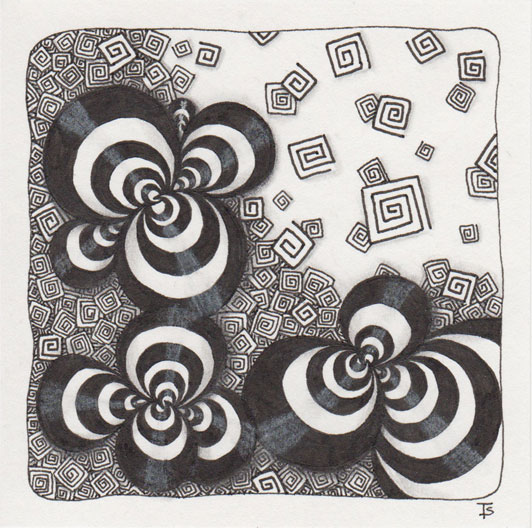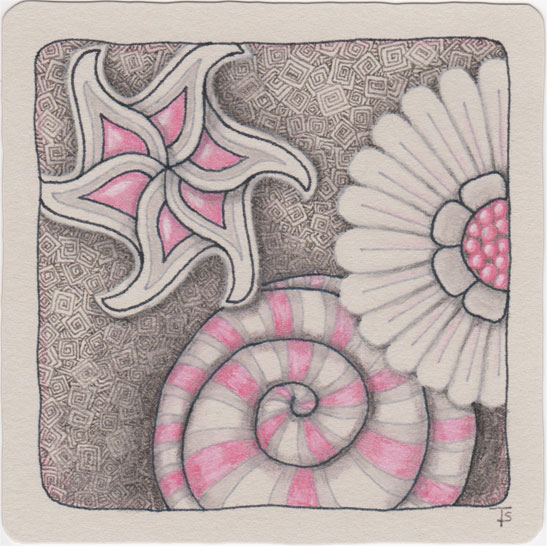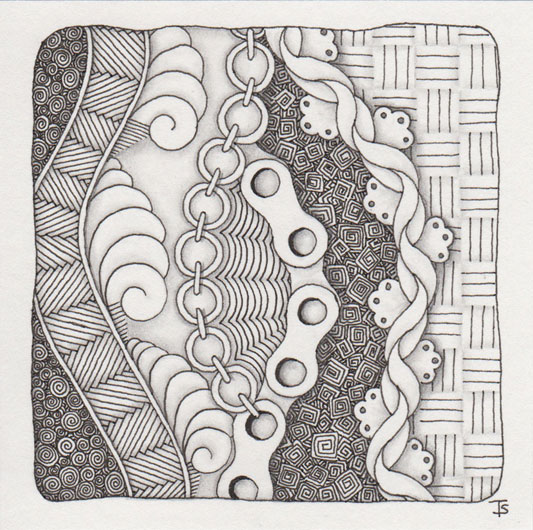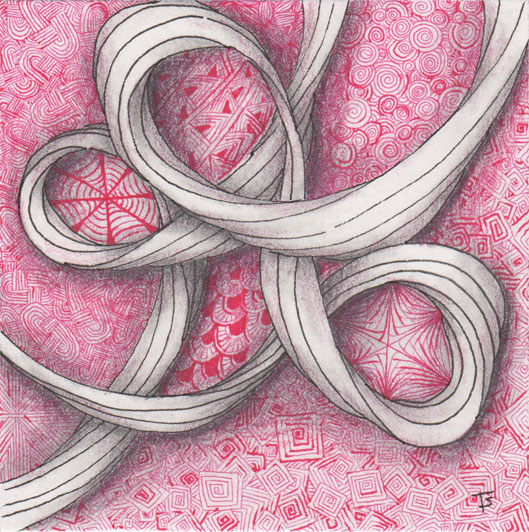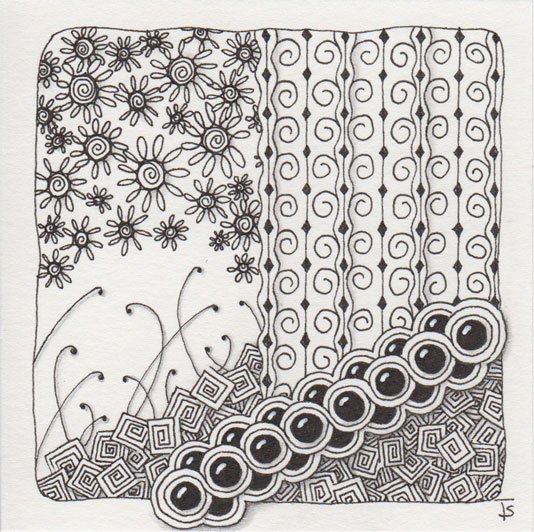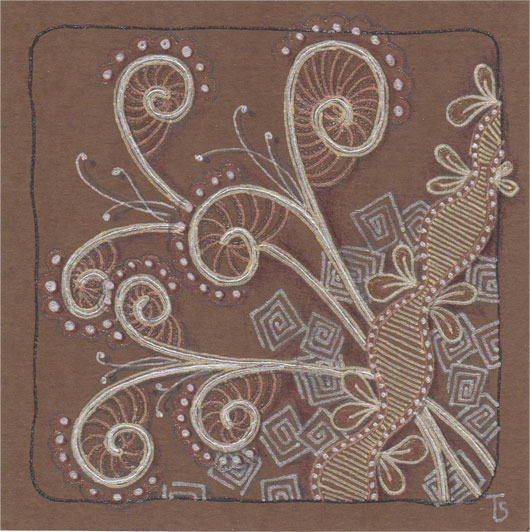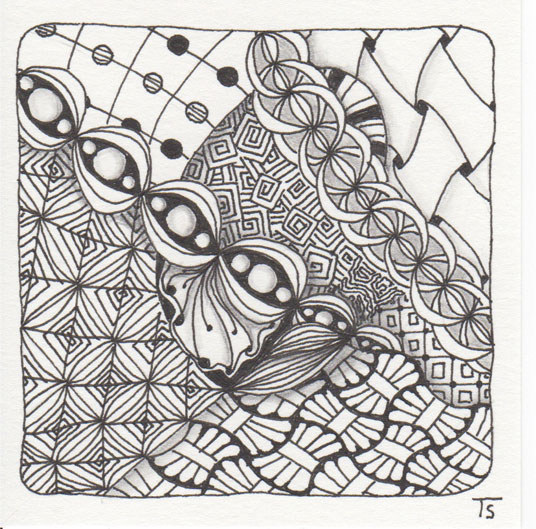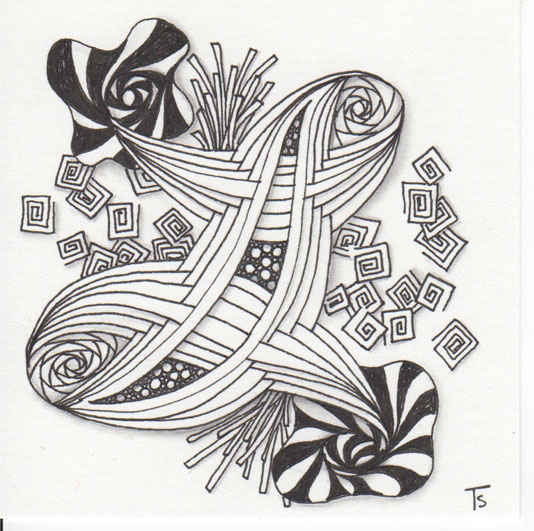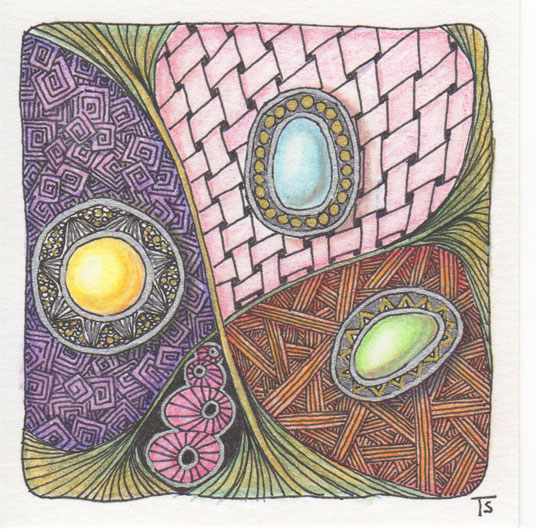The Entanglement library has a very few (so far) tangle patterns built in which can be used to create Zentangles. New ones get added to the library as I get to them, but you (yes, YOU) as a user can create them too. Warning! This post is mostly Javascript code! If that’s not your thing, avert your eyes now! You need version 0.0.5 of Entanglement to follow along:
<script src="https://cdn.jsdelivr.net/gh/tektsu/entanglement@0.0.5/dist/entanglement.js"></script> In this post, we’ll create a simple grid-based tangle pattern, then use it in a Zentangle. The tangle we’ll create is not particularly interesting, and is not a “real” Zentangle (as far as I know.) It’s just an example to show the process. The Entanglement library only supports two general kinds of tangles so far: a pattern of tangle elements placed randomly on the canvas, such as Aah or BoxSpirals, or a grid with some kind of pattern, such as Ambler or Emingle. We’ll create a grid tangle in this case. We want it to look something like this:
Up until now, the Entanglement library has provided a few tangle elements and a few tangles, which you could draw onto your canvas. But real Zentangles have a border, and might be round or triangular instead of square. To make this easier to do, Entanglement now has the Zentangle class. This is the top-level class you should use to define what your Zentangle should look like.
Here is an example using it. This program drew the image at the top of this page:
Recently I did a post about the Ambler tangle in the Entanglement library. Ambler uses an element called a box spiral. It turns out, box spirals appear in several tangles, most notably the Box Spirals tangle. In this post, we’ll talk about the Entanglement BoxSpiral class, which implements the Box Spirals tangle.
The box spiral used in Ambler as it is implemented in Entanglement is very specific. It consists of nine lines, and always rotates counter-clockwise. Therefore it can only be drawn in four orientations, with the spiral starting from one of the four corners of its enclosing box.
Daily grind.
They used the disks to grind the seeds into a fine flour. The flour was used to bake the unleavened bread that was eaten with every meal. Even though they lived in a world populated with technology, they still created the food by hand. She was impressed with their dedication to their tradition.
This week, one of the things I am focusing on is contrasts. Here, I kept it simple by using the contrasting shapes of circles and rectangles.
Passé data.
They fell from the sky as she watched from the tower. It looked as thought they were tossing out a mass of data chips before they landed. She wasn’t sure what good that would do… Nothing had worked since the pulse happened many years ago. Nobody cared. They were sick of the connections. The chips were pretty, though. Perhaps they could use the metals for adornment.
Zentangle drawn on Strathmore Vellum Bristol using a black, Micron pen. Shading done with graphite pencil.
Blossoms.
Some tangle patterns are a self-contained motif when completed. Many people call these blossom tangles. Here, I’ve used three different ones in a composition. I just wanted it to be simple, because I’m having a very busy day and don’t really have a lot of time for drawing.
Zentangle drawn on pearl grey Stonehenge multi-use paper using grey and pink Staedler pens and grey Copic multiliner. Shading done with Copic marker and colored pencil.
It’s a string thing.
For this tile, I decided to accent the string with ribbon-type tangles and used the fill areas more for texture than for focus. In addition, I did this tangle for a challenge in the Shading and Exploring Zentangle group on Facebook. The focus of the challenge was on the tangle Flovine, which was created by Lin Chiu. It is the last ribbon tangle on the right side of the tile. I really like the way the dark area of box spirals and the light area of Keko make it stand out!
Twisted Ropes.
This is my first attempt at trying the twisted rope techniques introduced by Eni Oken . I had a small problem with my pink pen… it started puddling and making inconsistent lines shortly after I stared. I decided to carry on with it anyway because I didn‘t want to start my tile over again. It turns out that, IMHO, the blooping pen actually added to the designs.
Zentangle drawn on Strathmore Vellum Bristol using a black, Micron and pink, Sanford Uniball pens. Shading done with graphite pencil and Polychromos colored pencil.
For your heart‘s healing, Lily.
This week, one of the Zentangle Facebook Groups that I belong to asked the members to draw tiles using tangles created by Lily Moon. This request came because she posted about a very difficult time in her life on her blog . I had never used any of her tangles before, so I chose Amphora.
Zentangle drawn on Strathmore Bristol Vellum using a black Micron pen.
Experimental.
This paper is from the same package as the tan I used for yesterday‘s drawing. I like the color, but it turned out to be rather difficult to tangle on. I ended up using metallic and glitter gel pens. Unfortunately, they don‘t show up well on the image here, but it really does look a bit better in person.
Zentangle drawn on cocolate cardstock using metallic Pentel Slicci gel pens, Kaiser metallic and glitter gel pens, and Zig Wink of Stella glitter pens. Highlights and shadows done with colored pencil.
Plenty.
That‘s how many tangles there are in this image. First of all, there‘s my favorite Inapod. I just love this tangle because it‘s easy to draw, kinda funky, and looks dramatic. Then all the rest of the tangles really shouldn‘t work together here, but they kind of do, and the shading lifts and individualizes each section.
Zentangle drawn on Strathmore Vellum Bristol using a black, Micron pen.
Tangles: Amaze Angel Fish Ballot Box Spirals Chads Enyshou Huggins Inapod Puf Stef-Ah-Ni Venetian
Symmetry can work, if it‘s not.
This tile is kind of unusual for me in several ways. It is basically symmetrical, but not perfectly so. I started with the large Ellish in the center of the tile and then added the other patterns in each related section. I think the Aquafleurs anchor the design nicely. I like this!
Zentangle drawing done with Micron pen on Strathmore Vellum Bristol .
Tangles: Apeel Aquafleur Box Spirals Ellish Tipple Trentworth
Sometimes you just need a little color in your life!
I recently got a set of Faber-Castel Polychromos Artist‘s Pencils . I‘ve always used Prismacolor pencils , but over the last few years the quality of the pencils themselves has gone down hill. So I was looking around to see if there was anything better and found the Polychromos.
For starters, they are oil-based, instead of wax-based. That means the pencil lead is harder, and puts down a more vibrant layer very quickly. I find they don‘t smear around as much, but they blend beautifully with a Copic Colorless Blender pen .
